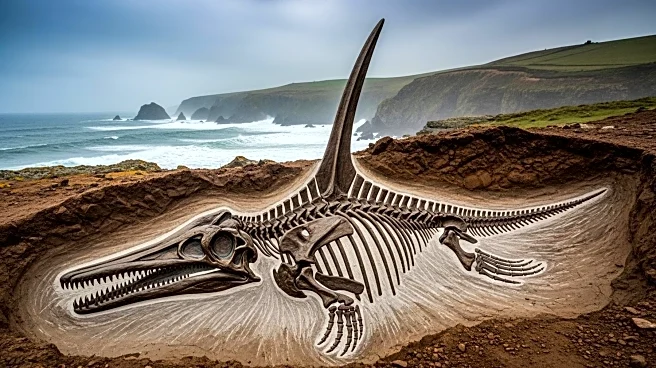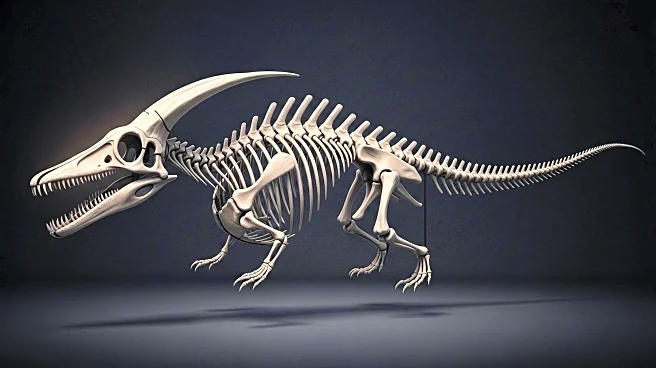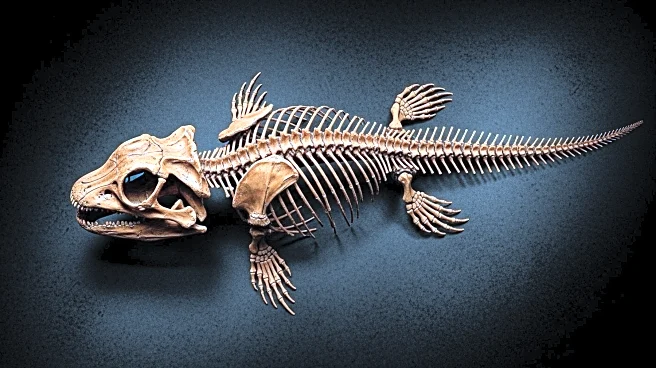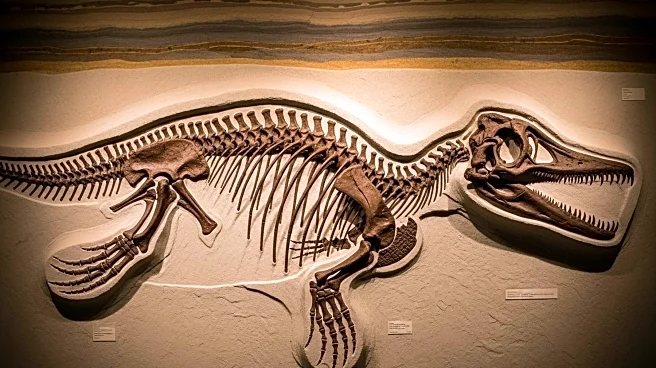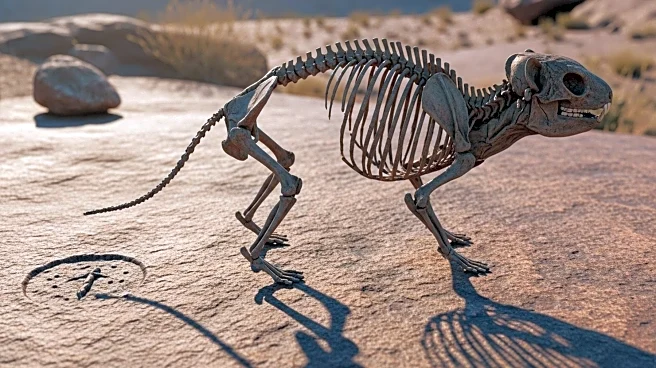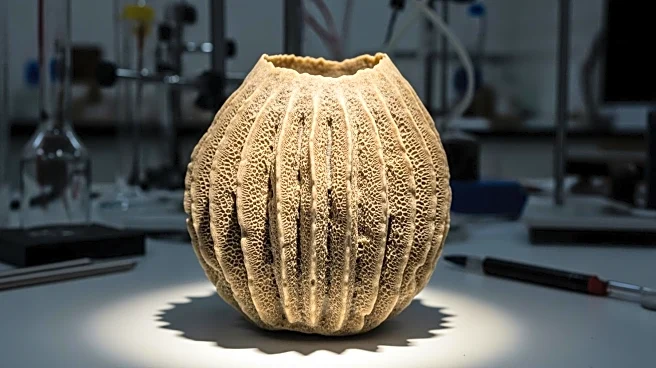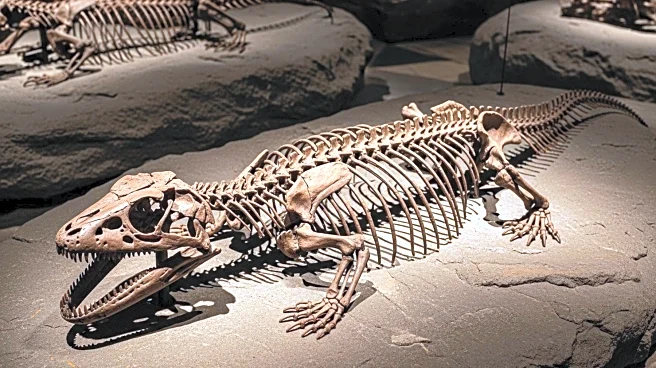What's Happening?
Scientists have uncovered a 167 million-year-old species that exhibits a unique blend of traits from both snakes and lizards. Known as the 'false snake of Elgol,' this ancient predator had a lizard-like short body with four limbs, but also possessed snake-like jaws and curved teeth similar to those of pythons. This discovery provides insight into the evolutionary history of reptiles, suggesting a possible early ancestor of both snakes and lizards. The research was conducted by a team of scientists and is documented by the National Museums Scotland.
Why It's Important?
The discovery of this ancient predator is significant for understanding the evolutionary pathways of reptiles, particularly the divergence between snakes and lizards. It offers valuable information about the morphological adaptations that occurred over millions of years, contributing to the diversity of reptilian species we see today. This research could impact the field of paleontology by providing new data on reptile evolution, potentially leading to revisions in the classification and understanding of ancient species. It also highlights the importance of fossil records in uncovering the history of life on Earth.
What's Next?
Further research and analysis of the 'false snake of Elgol' could lead to new insights into the evolutionary history of reptiles. Scientists may conduct additional studies to explore the genetic and environmental factors that contributed to the development of its unique traits. This discovery could prompt a reevaluation of existing theories about reptile evolution and encourage more fossil excavations to uncover similar species. The scientific community will likely continue to investigate the implications of this find, potentially leading to new discoveries in the field of evolutionary biology.
Beyond the Headlines
The discovery of this ancient predator raises questions about the complexity of evolutionary processes and the factors that drive species adaptation. It underscores the interconnectedness of life forms and the intricate pathways that lead to biodiversity. This find may inspire discussions about the role of environmental changes in shaping evolutionary outcomes and the importance of preserving fossil sites for future research. Additionally, it highlights the cultural fascination with prehistoric life and the ongoing quest to understand the origins of modern species.


